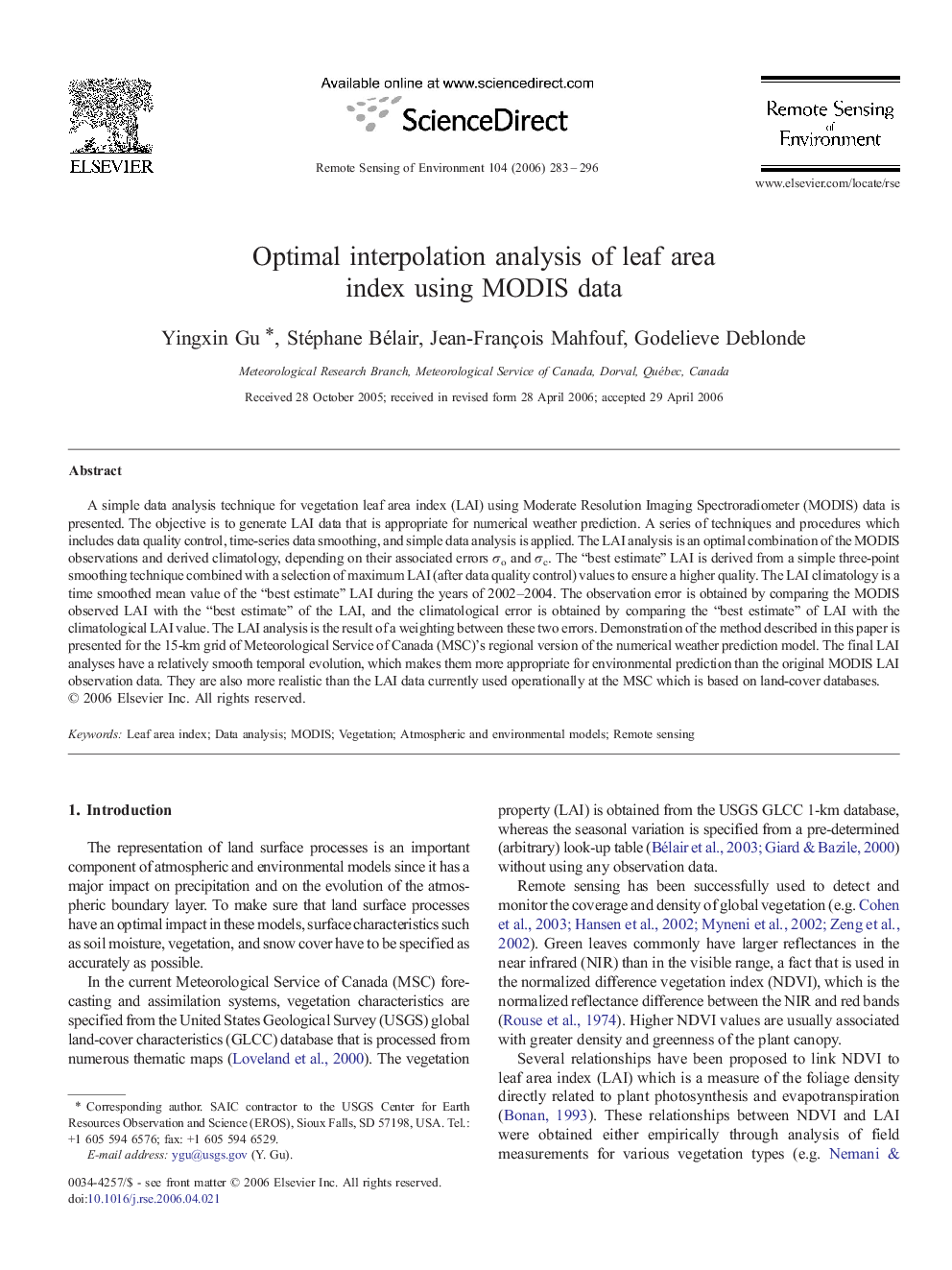| Article ID | Journal | Published Year | Pages | File Type |
|---|---|---|---|---|
| 4461081 | Remote Sensing of Environment | 2006 | 14 Pages |
A simple data analysis technique for vegetation leaf area index (LAI) using Moderate Resolution Imaging Spectroradiometer (MODIS) data is presented. The objective is to generate LAI data that is appropriate for numerical weather prediction. A series of techniques and procedures which includes data quality control, time-series data smoothing, and simple data analysis is applied. The LAI analysis is an optimal combination of the MODIS observations and derived climatology, depending on their associated errors σo and σc. The “best estimate” LAI is derived from a simple three-point smoothing technique combined with a selection of maximum LAI (after data quality control) values to ensure a higher quality. The LAI climatology is a time smoothed mean value of the “best estimate” LAI during the years of 2002–2004. The observation error is obtained by comparing the MODIS observed LAI with the “best estimate” of the LAI, and the climatological error is obtained by comparing the “best estimate” of LAI with the climatological LAI value. The LAI analysis is the result of a weighting between these two errors. Demonstration of the method described in this paper is presented for the 15-km grid of Meteorological Service of Canada (MSC)'s regional version of the numerical weather prediction model. The final LAI analyses have a relatively smooth temporal evolution, which makes them more appropriate for environmental prediction than the original MODIS LAI observation data. They are also more realistic than the LAI data currently used operationally at the MSC which is based on land-cover databases.
